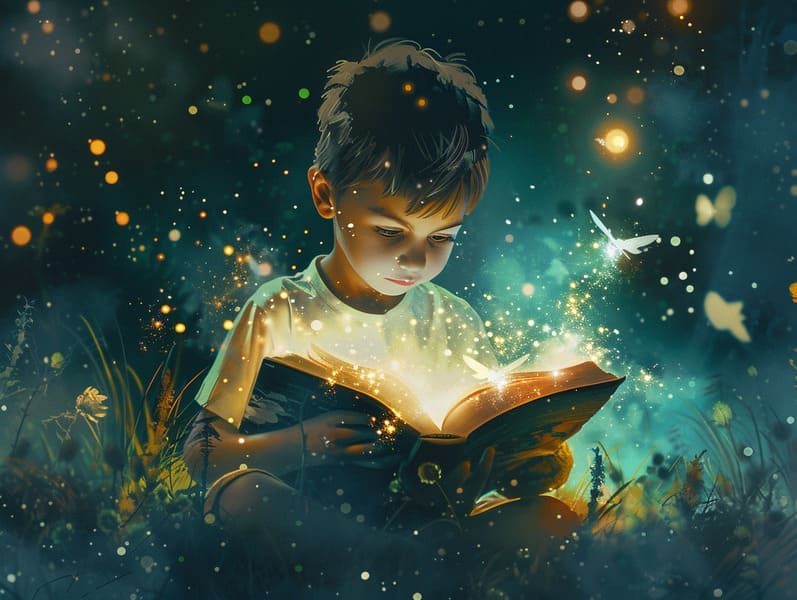A Brief History of Children's Fairy Tales with Their Invariable Splendor.
A Brief History of Children's Fairy Tales with Their Invariable Splendor.
Blog Article

Timeless fairy tales have legendary status. These stories have been whispered from one generation to the next long before they were ever recorded. They originated from a variety of traditions, including African traditions. They were initially transmitted among grown-ups, often carrying themes and messages mirroring the societal norms and beliefs of the time.
Jacob and Wilhelm Grimm, Jacob and Wilhelm (the Grimm brothers), were among the first to gather many of these beloved tales. Their published works, "Grimm's Fairy Tales," included classics like "The Little Glass Slipper," "The Bread Crumb Trail," and "Little Snow White," which have since become pillars in the world of children's fairy tales. Similarly, H. C. Andersen's whimsical tales, such as "The Little Mermaid," and "The Duckling's Story," have touched hearts worldwide, ensuring their place in the pantheon of treasured fairy tales.
Despite their age, fairy tales remain as impactful as ever, especially as kids' bedtime tales. These enchanting tales are now available in multiple formats, including vividly illustrated books, enchanting animations, and online storybooks.
Their persistent charm can be ascribed to several fascinating points:
Valuable Lessons: Ancient fairy tales often offer important moral lessons. Tales like "The Story of the Boy Who Cried Wolf" teach the significance of being truthful, while "The Hare and the Tortoise" point out the benefits of resolve and humbleness. These tales offer children clear distinctions between ethical and unethical, molding their moral compass in a gentle yet deep way.
Warmth and Understanding: Fairy tales frequently depict heroines facing trials and tribulations, inspiring readers to resonate with their struggles and root for their triumphs. For instance, "Beauty and Her Beast" demonstrates the benefit of valuing inner qualities to comprehend the inner core of a soul, developing understanding and knowledge.
Cultural Comprehension: Many classic fairy tales are saturated in the cultural contexts from which they sprang. Immersing in these stories can provide informative snapshots into different societies, enhancing a sense of global insight and comprehension.
Creativity and Imagination: The whimsical elements in old fairy tales—supernatural elements—promote children’s dreams. These narratives carry readers to fantasy realms, engendering inventive dreams and a sense of amazement that persists a lifetime.
Ancient fairy tales are not only mesmerizing but also didactic. They function as fascinating tools in enhancing various mental and emotional abilities in the young. When ancient fairy tales are voiced, they nurture speaking abilities by introducing new terms and detailed sentence structures. This practice also develops hearing perception and attention span, as young ones keep up with the story, anticipating to see what happens next.
Furthermore, discussing the themes and characters of old fairy tales can cultivate reasoning skills and evaluative skills. Young ones are taught to find patterns, expect results, and catch on to cause and effect. These deliberations also facilitate children articulate their thoughts and feelings, cultivating their emotional intelligence.
In today’s digital era, the presence of digital storybooks has made these fairy tales more attainable than ever. Web-based platforms and online apps make available wide arrays of popular fairy tales that can be looked at or listened on anytime, anywhere. Fairy tales read aloud are particularly widespread, extending check here an immersive method for little ones to delight in these delightful tales. Sound books and read-out-loud stories carry characters and settings to life, often accompanied by spellbinding harmonies and songs that elevate the tale experience.
The lasting allure of classic fairy tales lies in their ability to transform to contemporary times while keeping hold of their core messages. Contemporary revisions of these fairy tales often present more diverse characters and modern settings, making them relatable to today’s audience. However, the core values of braveness, warmth, and rightness remain unchanged, continuing to touch kids of all ages.
Timeless fairy tales also offer a sense of assurance and comprehensibility. They grant access to a tidy narrative with a apparent beginning, middle, and end, often ending with the finalization of conflicts and the triumph of truth over falsehood. This consistency can be encouraging for kids, delivering a sense of solidity in an fluctuating world.
Traditional fairy tales continue to entrance and edify new generations, maintaining their captivation and pertinence in modern society. As bedtime stories for kids, they provide a perfect blend of wonder and wisdom, enhancing moral values, empathy, and creativity. The availability of free fairy tales online and the prevalence of fairy tales told out loud promise that these ancient narratives remain acquirable to new generations.
By guarding and relating these fairy tales, we continue to appreciate the rich tapestry of legends and cultural heritage. Whether you are exploring a richly illustrated book, experiencing a digital library, or playing an read-aloud story, the magic of popular fairy tales is always within reach. These tales highlight of the undying nature of fairy tales and its ability to unify us across generations and cultures.
Regardless if you are seeing a colorful picture book, enjoying a digital library, or listening to an spoken story, the loveliness of popular fairy tales is always within reach.
These fairy tales point out of the everlasting magic of stories and its ability to gather us across epochs and places, casting a charm that delights and instructs alike.